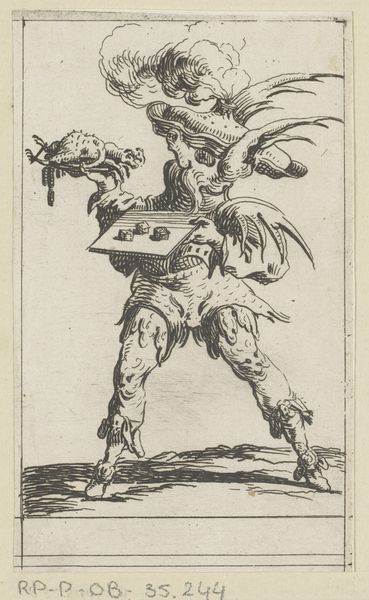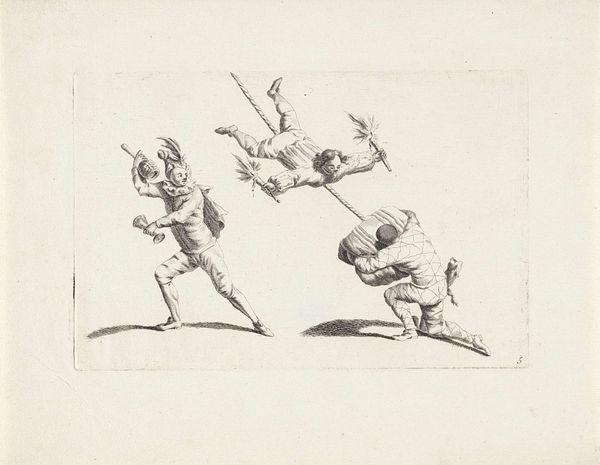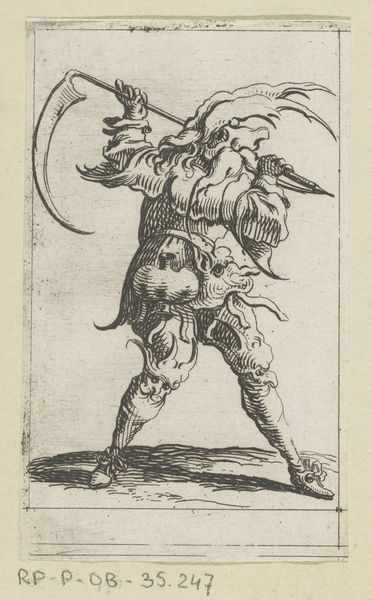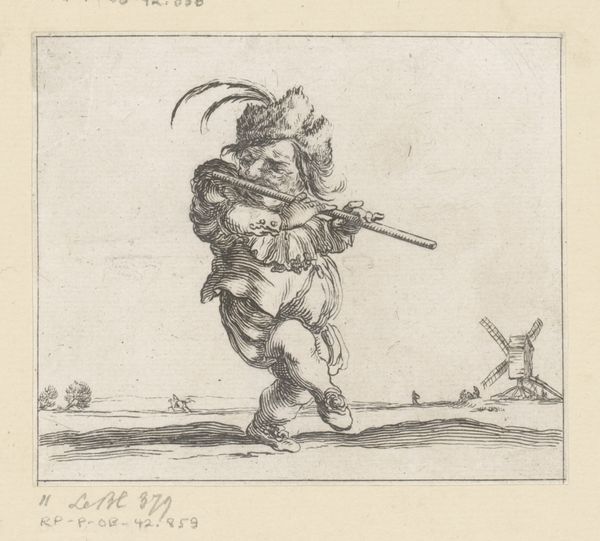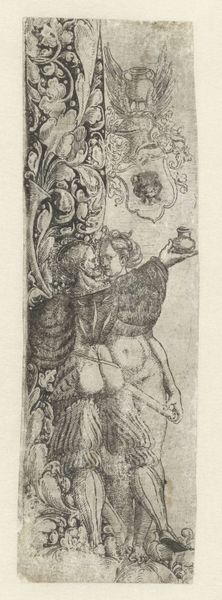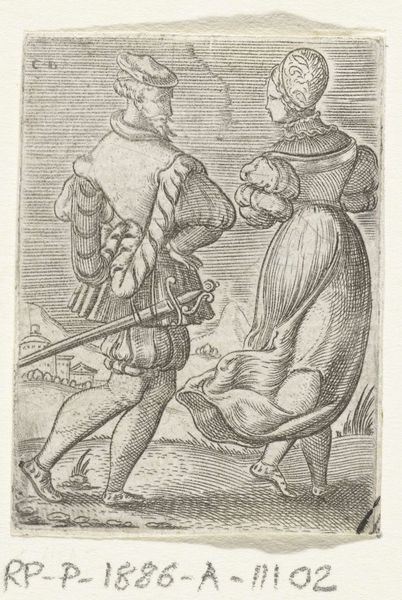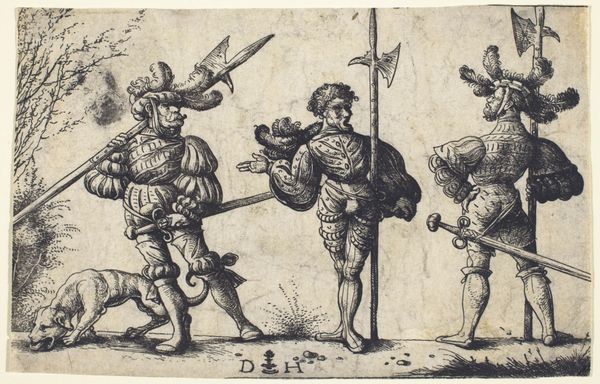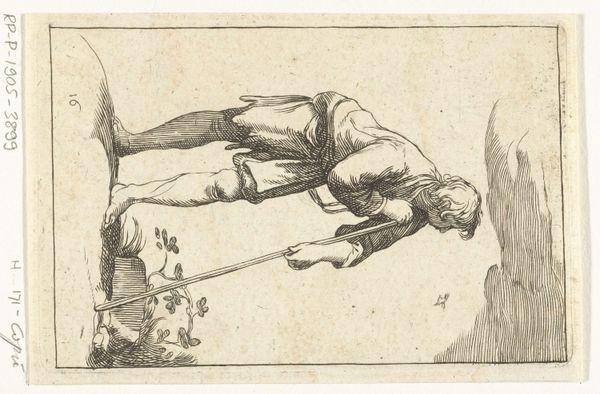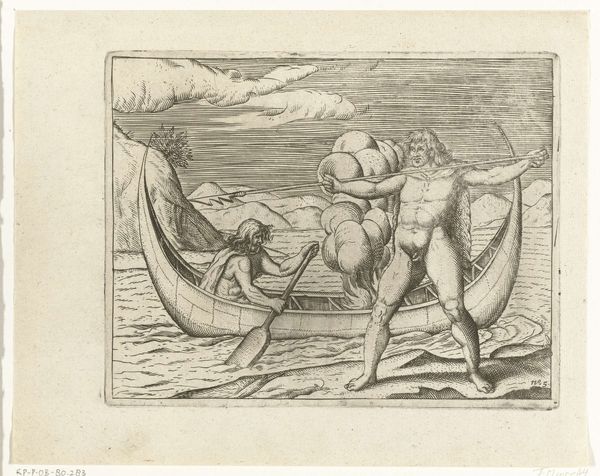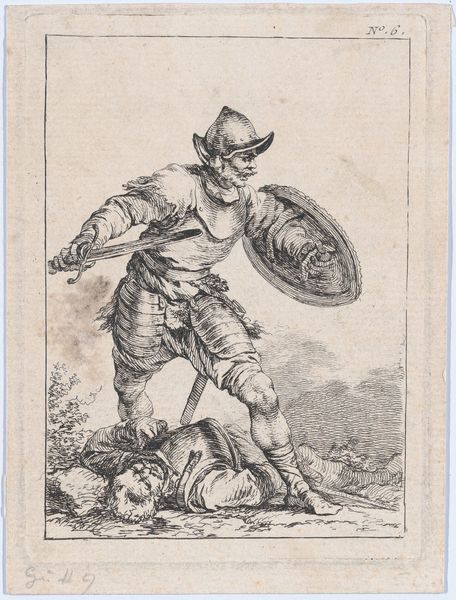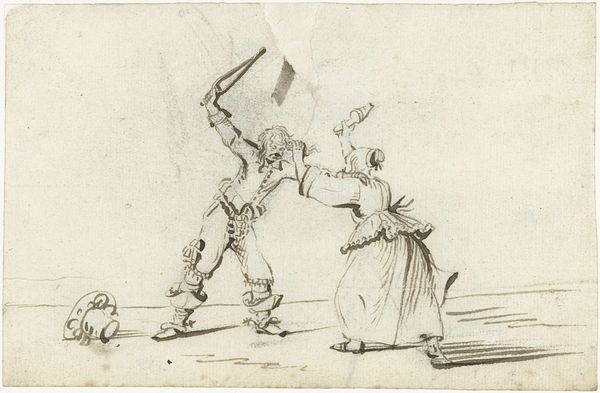
Eight Soldiers Engaged in Fencing Exercises c. 1541
0:00
0:00
drawing, print, etching, paper, engraving
#
portrait
#
drawing
#
medieval
# print
#
etching
#
figuration
#
paper
#
line
#
genre-painting
#
history-painting
#
northern-renaissance
#
engraving
Dimensions: 31 × 176 mm (image/plate); 34 × 179 mm (sheet)
Copyright: Public Domain
Curator: Before us, we have "Eight Soldiers Engaged in Fencing Exercises" by Virgilius Solis, the Elder, created around 1541. This dynamic piece, housed at the Art Institute of Chicago, is a detailed engraving. Editor: The figures are strikingly repetitive, aren't they? There is almost something choreographic, and darkly comical, about them. It strikes me as a particularly stark visualization of the martial male figure, very standardized. Curator: I see that choreography too. There is a clear symbolic order established through each fencer's poised movement, which harkens back to medieval values of discipline and chivalry. Each figure represents a stage in mastering military combat. Note the precise postures—each stance carries a distinct emotional and historical weight passed down. Editor: Exactly! I question how much the artwork idealizes the combative soldier. It almost satirizes, or deconstructs, violence, which, of course, must have always existed for soldiers. How were early forms of toxic masculinity emerging through such ritualized exercises? What socio-political messages can we find in that? Curator: Those are excellent points. The rhythmic depiction also suggests how deeply embedded such aggressive practices had become within that era’s culture. In other words, each repetition is not only functional, or satirical, but also culturally reaffirming. Look at the weapons – each sword’s position has symbolic weight that tells of power relations and status, the transfer of authority from teacher to learner. Editor: Yes, but it would be a huge mistake to idealize any element here without acknowledging how violent such patriarchal displays must have been, back then. While Virgilius Solis, the Elder may have merely wanted to capture combat exercise in etching form, there are important political layers we simply cannot skip over. Curator: Indeed. By observing not just the etching’s visual aspects but its cultural coding and emotional significance, it becomes less a simple genre painting and more a fascinating tableau encapsulating Renaissance-era values concerning martial virtue, its reproduction, and societal norms. Editor: It is imperative we interrogate how works like this normalize male violence and shape gendered ideals, rather than simply acknowledge those ideals, to actively reshape our perspectives today. Curator: A crucial perspective, and one I'm thankful you shared today.
Comments
No comments
Be the first to comment and join the conversation on the ultimate creative platform.
